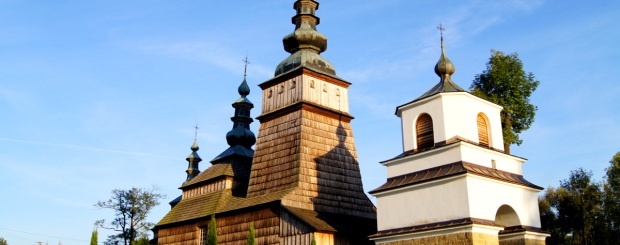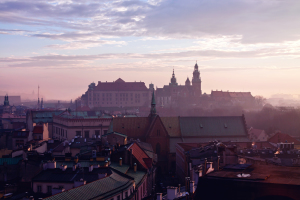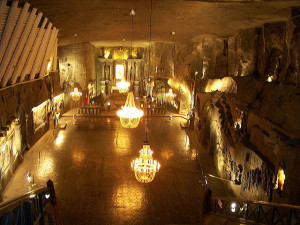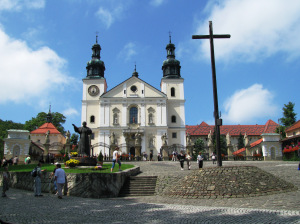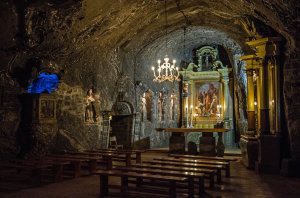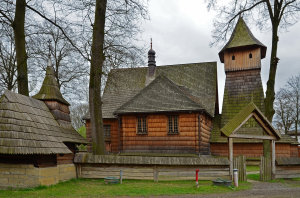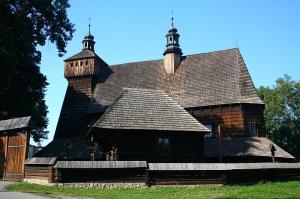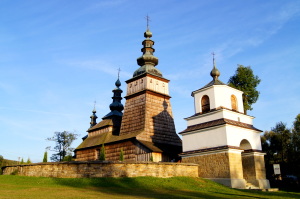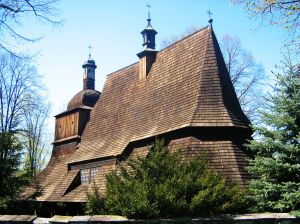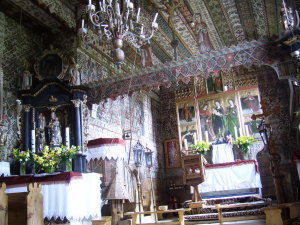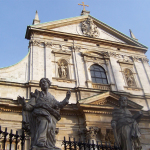There are 14 objects of UNESCO World Heritage Site in Poland. They are culture and heritage treasures of our country. One their feature is common – outstanding importance for humanity.
In Lesser Poland on UNESCO Site is Krakow – the most important center of culture and science in Poland, one of the most beautiful European cities, which is watched over by genius loci. Along with the Wieliczka Salt Mine they were placed on the first list in 1978, which included only 12 objects around the world.
Lesser Poland trail includes also a salt mine in Bochnia, so-called Polish Golgotha, the former Nazi death camp, 4 wooden churches and 8 Orthodox churches. We would like to invite you for a tour around Lesser Poland pearls.
Click here to change days and see details.
-
KRAKOW – WIELICZKA (approx. 30 km)
Our tour begins in Krakow. We will visit the Old Town, Wawel Castle, Kazimierz and Stradom districts. Former Polish capital is undoubtedly one of the most beautiful Polish cities, where the oldest buildings date back from the early Middle Ages.
In the afternoon we will visit the nearby Wieliczka, where is the Salt Mine, which has also been included on the UNESCO World Heritage Site as one of the first objects. Salt in Wieliczka was already extracted in the thirteenth century. Mine has 360 km of sidewalks and extends at 9 levels. Valuable cultural monuments are carved in salt altars, statues and other works of art.
-
KALWARIA ZEBRZYDOWSKA – AUSCHWITZ (approx. 150 km)
Breakfast and transfer to Kalwaria Zebrzydowska in order to admire the Mannerist Complex of Architecture, Landscape and pilgrimage park. Spiritual culture strikes us in Kalwaria. There is a Marian shrine and the Cross Way with its 42 churches and chapels, called Polish “Via Dolorosa” or Golgotha, built in the seventeenth century by Zebrzydowski family.
Transfer to Auschwitz. Visit to the former Nazi German concentration and extermination camp Auschwitz-Birkenau, which was the largest in the Third Reich. In this camp were killed about 1.5 million people.
Back to Krakow.
-
BOCHNIA – LIPNICA MUROWANA (approx. 75 km)
Third, fourth and fifth day are designed for Lesser Poland wooden monuments that are unique worldwide and are a record of the history of this region. Among them there are buildings of religious architecture, rural cottages, noble mansions, taverns and barns, still preserved in excellent condition. These churches are a group of extremely valuable historically and architecturally interesting wooden buildings. They are characterized by (mostly) framework structure and elements of presenting all architectural styles – from Gothic, Renaissance and Baroque to Secession (although from outside the Gothic style predominates). In Europe older than Polish churches are only Norwegian churches.
On the way visit to the slightly less popular than Wieliczka, but equally beautiful Bochnia Salt Mine, where mining began decades earlier than in Wieliczka Salt Mine. Mine is a priceless monument of art, and by protection of heading and unique salt chapels since the eighteenth century, they are kept in very good condition.
Transfer to Lipnica Murowana, where is the St. Leonard church. Church has survived up to this day in an almost unchanged shape and is one of the most valuable Gothic wooden churches in Poland.
Back to Krakow. -
BINAROWA – BLIZNE – HACZOW- OWCZARY (approx. 280 km)
After breakfast departure to Binarowa, where is St. Michael the Archangel church. It was built in late Gothic style in 1500. Inside, at ceilings are valuable paintings from the beginning of sixteenth century, walls are decorated with Baroque paintings from Bible and chapel has unique wall paintings from 1655. The most valuable pieces of equipment are from the end of the sixteenth century: the Gothic sculpture of Virgin Mary with Child and saints reliefs, located in the side altars.
Transfer to the Blizne and visit the All Saints church, which was built at the turn of the fifteenth and sixteenth centuries. The most valuable part of this monument is the paintings on the walls of the temple, from sixteenth to eighteenth century. It represents the so-called. “liber – pauperum ” (book of the poor), a pictorial representation of the Bible for the simple people who could not read. Noteworthy is the scene of the Last Judgement at the north wall.
Transfer to Haczow. Church in Haczow is the largest, and also most valuable wooden church in Europe. It is considered as the oldest wooden church in Poland (built in 1388.). Inside there is a figural polychrome from 1494. It is the oldest monumental decorative paintings in a wooden church.
Transfer to Owczary, where is the Orthodox Church (now the Roman Catholic church). You can enjoy here complete equipment of the Orthodox Church from seventeenth to twentieth century: Baroque iconostasis and side altars with icons of the Virgin Mary and St. Nicholas. Conservation action of this temple has been awarded international Europa Nostra award.
Dinner and overnight in the area. -
SEKOWA- KWIATON – BRUNARY WYZNE – POWROZNIK – DEBNO (approx. 180 km)
Breakfast, transfer to Sekowa and visit in beautiful church of St. Apostles Philip and James. It was built in 1520. The tower was built in the eighteenth century. The most valuable part of the interior is late Renaissance altar from the beginning of seventeenth century, reconstructed in 1948-49. There are paintings of St. Nicholas, Anthony, Benedict and sculpture of Saviour of the World at rich in polychrome altar.
Transfer to Kwiaton and a visit to the seventeenth-century, Orthodox Church of Paraskewa (now the Roman Catholic Church), which is one of the best preserved temples of western Lemko people.
The next stops are Brunary Wyzne and Powroznik, where are two churches in the western Lemko style (now the Roman Catholic churches). St. Michael the Archangel church located in Brunary is from 1779. Inside is Baroque iconostasis from eighteenth century repainted during the renovation in 1831. St. James the Younger Orthodox church from the 1600 is in Powroznik. It is the oldest Orthodox church in the Polish part of Carpathians. The walls of the sacristy are covered by valuable polychrome, and rich equipment of the temple consists of iconostasis, baroque side altar with the image of Christ at the Pillar and valuable icons.
At the end of the day we will visit Debno Podhalanskie, where is one of the most important churches in Poland – St. Michael the Archangel church. Its extensive equipment consists of priceless crucifix from the fourteenth century and complete triptych from the sixteenth century.
Back to Krakow
Social Share
Most popular packages
Contact us!
MADE IN KRAKOW is owner of 2 brands - Pavo Travel and Żywe Muzeum Obwarzanka (Interactive Museum of Obwarzanek). Registered in Register of Tourism Organisers and Agents, conducted by Marshal of Lesser Poland Voivodeship, with the Insurance Guarantee by Europa S.A.
We are a proud member of


